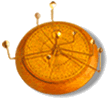PRESCRIBED
THEMES AND TOPICS, AND SUGGESTED SUB-TOPICS
|
The individual
|
The Slovenian-speaking communities
|
The changing world
|
Personal
identity
For
example, personal values, family and friends, relationships,
home and community. |
Lifestyles
in Slovenia and abroad
For
example, festivals, customs and traditions, cultural and regional
diversity.
|
Youth
issues
For
example, youth culture, self image, peer pressure, youth values,
employment. |
Education
and aspirations
For
example, school life, further education, future plans |
Past
and present
For
example, the changing face of Slovenia and Slovenian society
historical and current events, places and people. |
World
of work
For
example, technology, equitv in the workplace, career opportunities,
business links with Slovenia. |
Leisure
and recreation
For
example, hobbies and interests, entertainment, holidays and travel, sports,
health and fitness |
Arts
and entertainment
For
example, literature, poetry, myths and legends, music and
songs, theatre, film, media, prominent Slovenians. |
Issues
in today's world
For
example, environment, cross-
cultural perspectives, urbanisation,
globalisation, migration. |
|
Note: Bold = Prescribed themes, Blue Italics = Prescribed topics, Italics = Suggested sub-topics
|
TEXT TYPES
The
student will be expected to be familiar with the following text
types. Text types indicated with an asterisk (*) are those which the student may be expected to produce
in the external examination. Teachers may introduce the student
to a wider range of text types in the course of their teaching
and learning program.
|
Advertisement
Announcement
Article*
Chart
Conversation*
Discusson*
Editorial
Email
Film
Form
Formal letter
Informal letter*
|
Interview
Invitation
Journal entry/diary*
List
Map
Menu
Message/note*
News item
Notice
Personal profile*
Play
Poem
|
Postcard*
Recipe
Report*
Review*
Short story
Song
Story/narrative account*
Survey
Table/timetable
Text of a speech/talk*
|
KINDS
OF WRITING
The
student is expected to be familiar with, and be able to produce
the following five kinds of writing: personal, informative, persuasive,
evaluative and imaginative.
Aleksandra
Ceferin, Thezaurus (Melbourne 2000)
|

